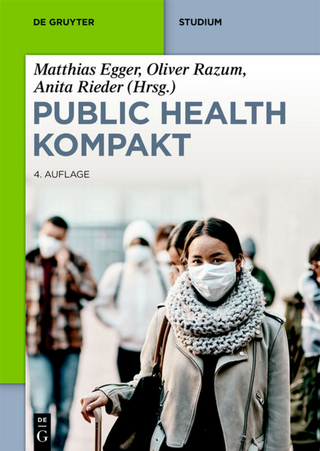
Water and Health in an Overcrowded World
Oxford University Press (Verlag)
978-0-19-923730-2 (ISBN)
- Titel ist leider vergriffen;
keine Neuauflage - Artikel merken
Water and Health in an Overcrowded World illuminates the ways in which urban and rural environments and living conditions affect human health, disease and disability in contrasting populations around the world. It looks widely, setting the health experience of contemporary societies in a rapidly urbanising world in the context of human evolutionary history and human biology. The great majority of humans now live in an environment which is very different from that in which we evolved. We are still subject to the age-old selection pressures of infectious disease and interpersonal violence, but living in an overcrowded 'human zoo' is generating unprecedented sources of human disease and disability, such as pollution, traffic accidents, obesity, alcohol, tobacco and stress. An interactive DVD program models the evolution of one new threat: antibiotic resistant bacteria. The human zoo offers many benefits, but the costs to human health and happiness are considerable, as a review of some key global health statistic illustrates. The book concludes with a detailed case study of a scarce resource which is vital for human health: clean water.
It considers the global water cycle, the uneven distribution and use of water between regions, and the impact of population growth, development and climate change on freshwater resources. More than a billion people worldwide are at risk from polluted drinking water and two and a half billion lack even the most basic sanitation. The consequences are illustrated by a discussion of water-borne diseases such as cholera, which cause millions of deaths every year. An interactive DVD using chemical models, video clips and photographs presents the chemistry of water at the molecular level and explains how compounds such as nitrates from fertilisers dissolve in it. This leads to an examination of water pollution by chemicals of human origin, including nitrates, mercury and endocrine disruptors. The authors conclude that the Earth's expanding human population is in a rapidly accelerating competition for water for irrigation, drinking and industrial processes, which threatens both human health and the preservation of biodiversity.
The Online Resource Centre features: For lecturers who are registered adopters of the book: - Figures from the book in electronic format, available to download For students: Access to ROUTES, a searchable internet database of online resources compiled by academic staff and subject-specialist librarians.
Professor Tim Halliday is an evolutionary biologist, primarily interested in amphibians. His initial focus was on the sexual behaviour of amphibians, but has become increasingly interested in their life histories and ecology. For the last twelve years he has led an international initiative to investigate why amphibians are in severe decline throughout the world. Tim has published numerous research publications, and has contributed materials to a number of previous Open University course texts. Dr Basiro Davey is Deputy Director of the Health Sciences programme at the Open University, and course chair for the Open University course for which this series has been developed. Basiro joined the Science Faculty of the Open University in 1976, having previously been a researcher investigating various aspects of tumour immunology. Since then, she has been a major contributor to many Open University courses, including Health and Disease, Human Biology and Health, and Infectious Disease. An experienced textbook author, Basiro has originated much published course material during her time at the Open University; she continues to be series editor for the nine-text Health and Disease series, which is cop-published with the Open University Press.
1. Living in the human zoo ; 1.1 Introduction ; 1.2 The modern human environment ; 1.3 A very short history of human evolution ; 1.4 Costs and benefits of life in developed countries ; 1.5 Diet, obesity and the risk to health ; 1.6 Psychological problems in the human zoo ; 2. Measuring the world's health ; 2.1 Epidemiology ; 2.2 Counting deaths ; 2.3 Estimating the burden of ill health ; 3. Water and human health ; 3.1 Water as a global resource ; 3.2 The global water cycle ; 3.3 The distribution of water and its use by people ; 3.4 Water-borne infectious diseases ; 3.5 Water chemistry and life ; 3.6 Chemical pollution of water ; 3.7 Postscript to this book
| Erscheint lt. Verlag | 1.9.2007 |
|---|---|
| Zusatzinfo | 60 full colour illustrations |
| Verlagsort | Oxford |
| Sprache | englisch |
| Gewicht | 436 g |
| Themenwelt | Medizin / Pharmazie ► Pflege |
| Studium ► Querschnittsbereiche ► Epidemiologie / Med. Biometrie | |
| Studium ► Querschnittsbereiche ► Prävention / Gesundheitsförderung | |
| ISBN-10 | 0-19-923730-1 / 0199237301 |
| ISBN-13 | 978-0-19-923730-2 / 9780199237302 |
| Zustand | Neuware |
| Haben Sie eine Frage zum Produkt? |
aus dem Bereich


